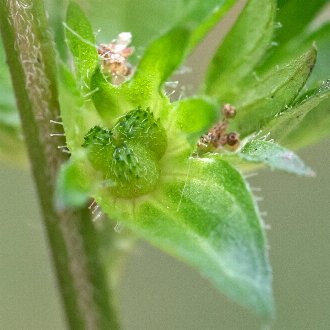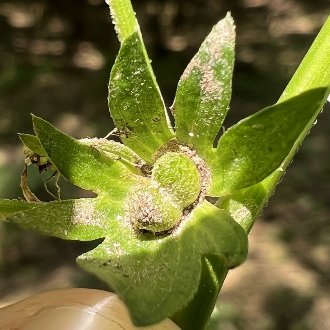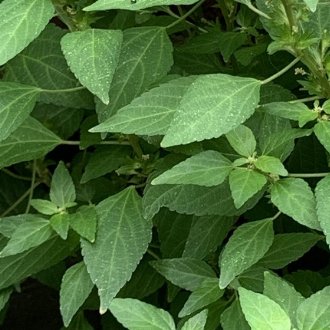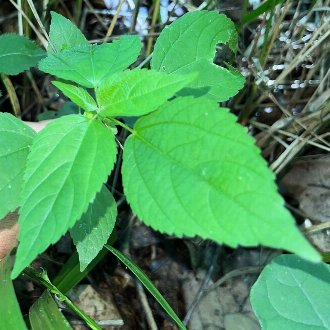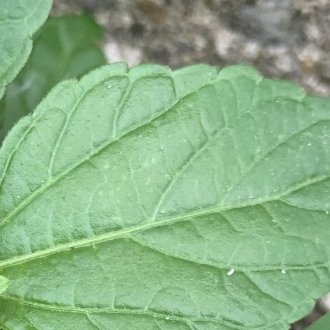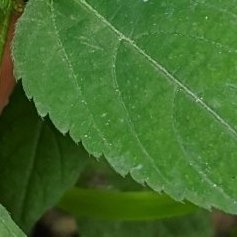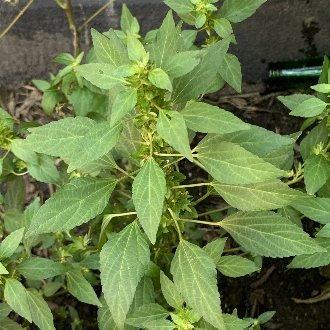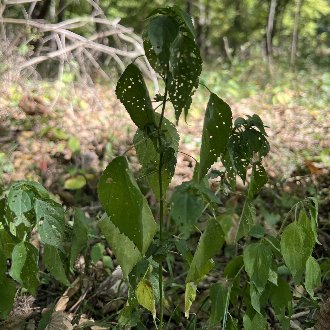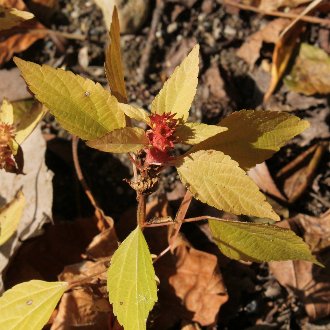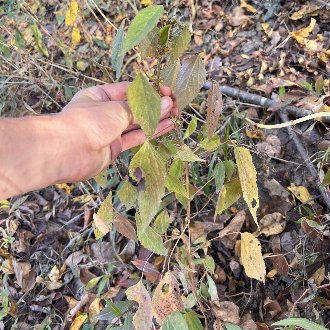Rhomboid Mercury vs Deam's Mercury
These two species look similar, especially early in the growing season. They can be distinguished by the number of seeds per bract, and they have subtle but mostly overlapping differences in leaf margins, leaf dimensions, bract dimensions, and growth habit. A. rhomboidea is common and abundant, has a much wider range, and ranges into sunnier and drier habitats, prefers more fertile, loamy soils, and is more tolerant of clay soil and competition from other plants. A. deamii is uncommon to rare, has a much smaller range, is restricted to moist, open forests, prefers more sandy or gravely soils, and is less tolerant of sun, dry conditions, and competition, but is more tolerant of shade.
Rhomboid Mercury (Acalypha rhomboidea) | Deam's Mercury (Acalypha deamii) |
A common annual native to eastern to central North America, found in a range of habitats that have been disturbed in late spring to early summer. | A rare annual of disturbed sites in floodplain forests, native to a narrow range in the eastern US. |
Seeds are smaller (1.5–1.7mm) and there are usually 3 per bract. Bract lobes average shallower: lobes are 1/3rd to 2/3rd the bract length. Photo © Bill Keim, CC BY 4.0. | Seeds are larger (2.4–3.2 mm), and there are usually 2 per bract. Bract lobes average deeper: lobes are 1/3rd to 3/4 the bract length. Photo © Nathan Aaron, CC BY 4.0. |
Leaves average slightly smaller (2-9 × 0.8-5cm). Widest point on leaves often makes a more abrupt angle and is often closer to the middle of the leaf blade. Leaf bases are usually obtuse, but often make a slightly narrower angle. Photo © Sandy Wolkenberg, CC BY 4.0. | Leaves average slightly larger (4-12 × 2-7cm). Widest point on leaves is often a bit more rounded in shape, and is often slightly closer to the base of the leaf blade. Leaf bases are often slightly more rounded or make a wider (more obtuse) angle, and are sometimes minutely heart-shaped. Photo © Nathan Aaron, CC BY 4.0. |
Leaf margins may be sharply serrated, but tend slightly more towards a rounded shape and are sometimes crenate (with rounded teeth.) Photo © Ian Wolfe, Public Domain. | Leaf margins are consistently more sharply serrated, not crenate. Photo © Nathan Aaron, CC BY 4.0. |
Plants average shorter (15-60cm or ~6-23.5in) but with much overlap especially on the high end. Plants usually grow upright but occasionally sprawl. Photo © Sandy Wolkenberg, CC BY 4.0. | Plants average taller (30-70cm or ~12-27.5in) but with much overlap on the low end. Plants always grow upright. Photo © Nathan Aaron, CC BY 4.0. |
Leaves of mature plants, late in the season, are less likely to droop, but plants are more likely to turn a bold reddish or yellow color. Photo © Quinten Wiegersma, CC BY 4.0. | Leaves of mature plants, later in the season, are more likely to droop. Color of dying leaves is more drab, usually a pale browish yellow. Photo © Nathan Aaron, CC BY 4.0. |
Additional Notes
All of the characteristics used to distinguish these species are subject to variability, in part because A. rhomboidea is such a highly variable species. Although uncommon, it is even possible for bracts on A. rhomboidea to contain only two seeds, and this is particularly the case if one of the seeds has fallen out. It is safest to examine many bracts to make a definitive ID.The bloom period mostly overlaps, and both species have long bloom periods with seeds maturing incrementally as the plant continues to bloom, but A. rhomboidea, probably owing to being more common and occurring in a wider range of habitats, sometimes starts blooming significantly earlier than the earliest A. deamii plants.
The difference in droopiness of leaves on mature plants likely reflects differences in habitat. A. deamii grows in floodplains, often on sandy or gravely soil. These habitats are shadier, demanding larger leaves and a taller height to capture light, but even though these habitats are moist overall, local sandy/gravely substrates dry out quickly during periods without rain. Dry conditions are common later in the growing season when temperatures are higher and water levels in rivers and streams are lower. A. rhomboidea on the other hand, is more likely on sunnier sites with soils better at retaining water; when it grows on drier soils, it grows shorter and with smaller leaves. Under these conditions, drooping is less necessary to conserve water. However, colorful pigments are more necessary to protect leaves from damage during the senescence process, in which the plant breaks down leaves to funnel remaining energy into seed production. Hence it is more likely to turn a bolder color towards the end of its lifecycle.
Another difference between these species is that, on the rare allomorphic pistillate flowers, which tend to occur alone in axils near the base of the stem, the pedicels are poorly-developed on A. deamii but usually well-defined and 1-2mm in length on A. rhomboidea. This trait is difficult to observe both because of requiring magnification, and because these flowers are rare and usually absent on most plants. We have not even been able to locate pictures of these flowers on A. deamii but we may add them to this guide if we can obtain such pictures.
Because of the difficulty in distinguishing A. deamii from the much more common A. rhomboidea, it is likely that A. deamii is underreported and it may occur in areas beyond its reported range.
References & External Resources
These short lists show only links helpful for ID. For a complete list of references and resources also covering other aspects of ecology, visit the links section of the full article on each plant, which is the first entry here.



